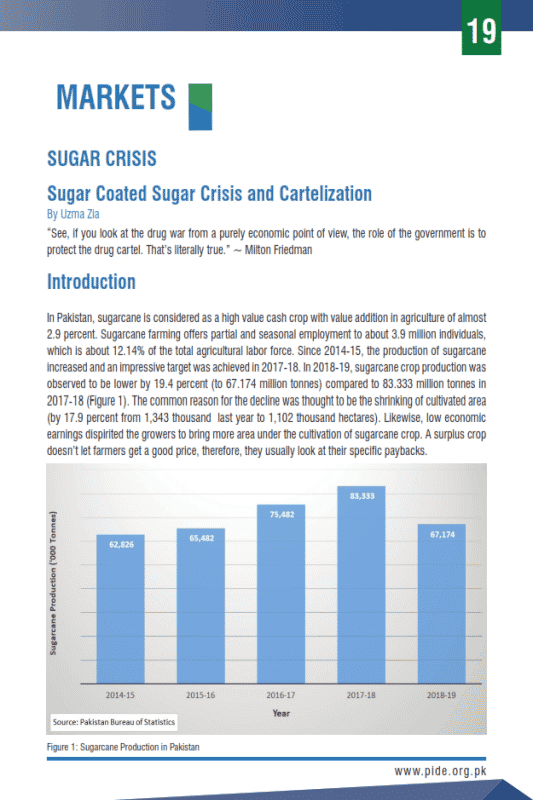
Pakistan Institute of Development Economics
- Home
Our Portals
MenuMenuMenuMenuMenuMenuMenu - ResearchMenuMenuMenuMenuMenuMenuMenu
- Discourse
- The PDR
- Our Researchers
- Academics
- Degree Verification
- Thesis Portal
- Our Portals
Sugar Coated Sugar Crisis and Cartelization
In Pakistan, sugarcane is considered as a high value cash crop with value addition in agriculture of almost 2.9 percent. Sugarcane farming offers partial and seasonal employment to about 3.9 million individuals, which is about 12.14% of the total agricultural labor force. Since 2014-15, the production of sugarcane increased and an impressive target was achieved in 2017-18. In 2018-19, sugarcane crop production was observed to be lower by 19.4 percent (to 67.174 million tonnes) compared to 83.333 million tonnes in 2017-18 (Figure 1). The common reason for the decline was thought to be the shrinking of cultivated area (by 17.9 percent from 1,343 thousand last year to 1,102 thousand hectares). Likewise, low economic earnings dispirited the growers to bring more area under the cultivation of sugarcane crop. A surplus crop doesn’t let farmers get a good price, therefore, they usually look at their specific paybacks.



